The Thermal Data
In a change from the 360mm thermal testing, all other radiator sizes are only going to be tested at 1.0 GPM. We proved that for 95% of the rads tested, flow rates over 1.0 GPM did not make any significant impact on the radiator performance. The decision to only test at 1.0 GPM is also because of the time required to complete this testing, and running the additional flow rates effectively doubled the required test time.
A total of 6 tests were conducted at 1.0 GPM with fan speeds of 750 rpm, 1300 rpm and 1850 rpm being run in Push Only and Push/Pull. All inclusive this testing still takes between 40 – 50 hours of logging time to get the results that are presented.
Below is the final data results gathered from at least 5 data logging runs at the flow rate and fan rpm combination. The most stable 15 minute period from each logging run was used and then averaged with the other runs to obtain the data for the table below. A total of 16 temperature sensors were used in the thermal test chamber (8 air in, 2 air out, 3 water in, 3 water out) each take a reading every second and logged via a CrystalFontz unit.
The data in the table below is the averaged results of the logging runs which has then been used to create all the plots and tables there-after.
The performance metric of critical importance is the delta between the warm coolant temperature in and the cold ambient air temperature in to the radiator. Given that the system is well insulated and in equilibrium and we know the heat input to the system then we can also calculate a very important number – that is the amount of power required to raise the coolant temperature 1C (or 10C which is a more useful reference point).
Let’s take a look at the Delta T results from the tests. Note that the extrapolation of the curve is much more sensitive to error than in between the tested range.
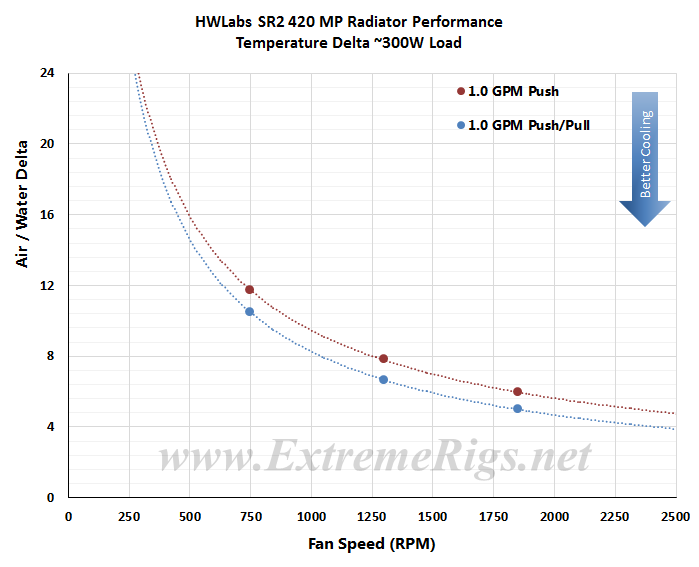 I was not too concerned about the actual delta numbers, more so the trend pattern, and as we should expect, the deltas come down significantly as the fan speed is increased.
I was not too concerned about the actual delta numbers, more so the trend pattern, and as we should expect, the deltas come down significantly as the fan speed is increased.
Delta T results (as above) is not always helpful when thinking about how many radiators you would need to cool your system. Instead it’s more useful to know the delta/W, or more usefully, the inverse metric of W/delta C. The metric plotted below tells us how many watts are dissipated by the radiator when the coolant rises 10C above ambient temperatures. (W/10 Delta T):
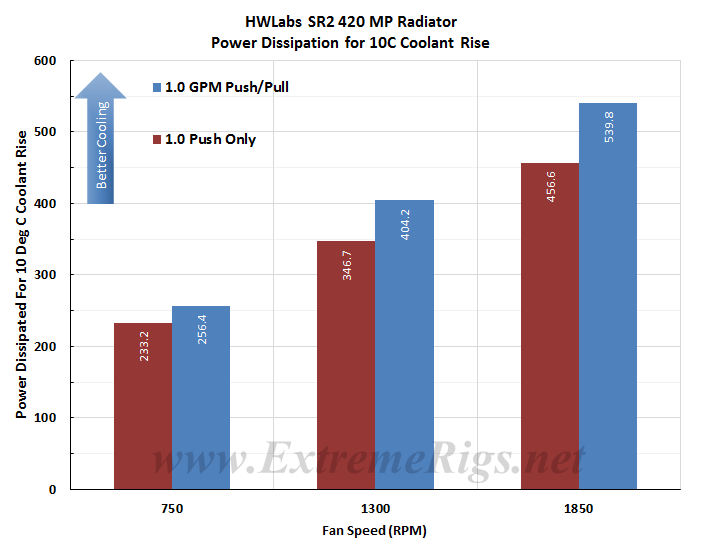 This same data can now be plotted on a chart so that an end user can interpolate their own fan speed. Note again that the extrapolation of the curve is much more sensitive to error than in between the tested range.
This same data can now be plotted on a chart so that an end user can interpolate their own fan speed. Note again that the extrapolation of the curve is much more sensitive to error than in between the tested range.
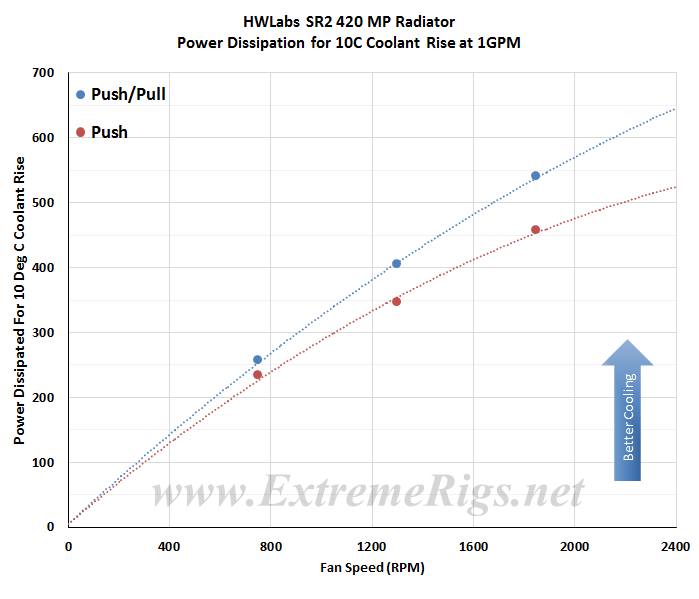 With the SR2’s low fin count of 9 FPI, the results show that a Push Only fan assembly is very efficient on this radiator at all rpms, and that adding a second set of fans (Push/Pull) only yields an average performance increase of ~13%.
With the SR2’s low fin count of 9 FPI, the results show that a Push Only fan assembly is very efficient on this radiator at all rpms, and that adding a second set of fans (Push/Pull) only yields an average performance increase of ~13%.
Now let’s analyze that data some more…







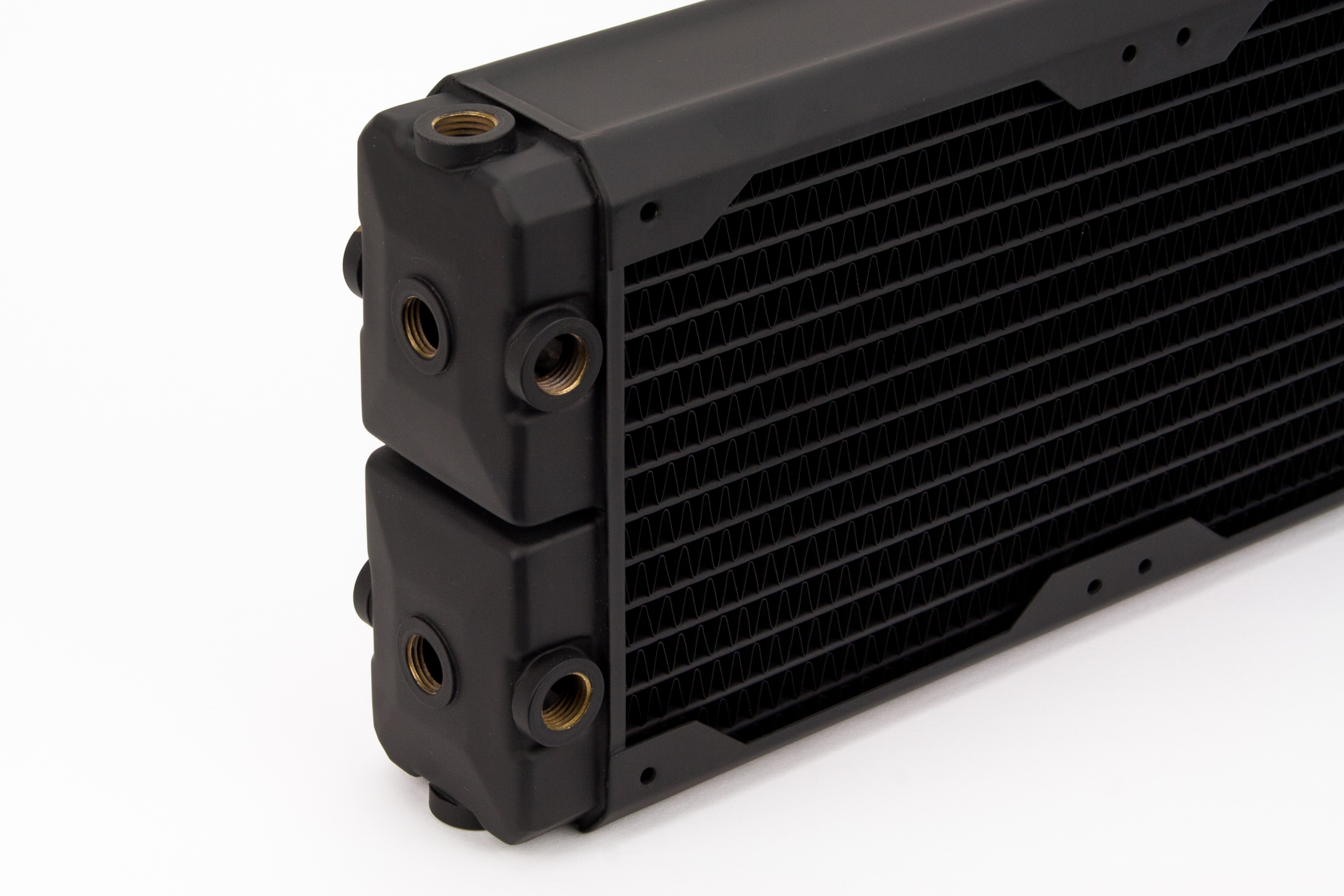
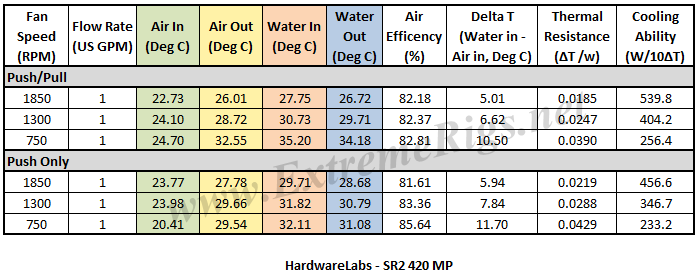



Thank you for the hard work! The section about testing methods was especially interesting. I have to wonder though… a silver award with a score of 4.5 out of 5? Is this a “goldish” silver or satin nickel silver? 😉
We discussed the appropriate award to be issued and in the end it came down to 3 reasons why we did not issue gold.
The price point is very high compared to the radiator in the review.
We would like to see the ancillary port introduced.
And to a lesser degree the review sample had a few issues with the paint finish.
So while the SR2 MultiPorts are an excellent radiator choice, we feel there is still room for a little improvement.
Let’s call it a Goldish Silver 🙂
HWL doesn’t list the non-multiport version any longer on their website and that is unfortunate. For a lot of reasons, multiport isn’t ideal in all circumstances. If there are stop fittings installed, there will likely be clearance issues.
Comments are closed.